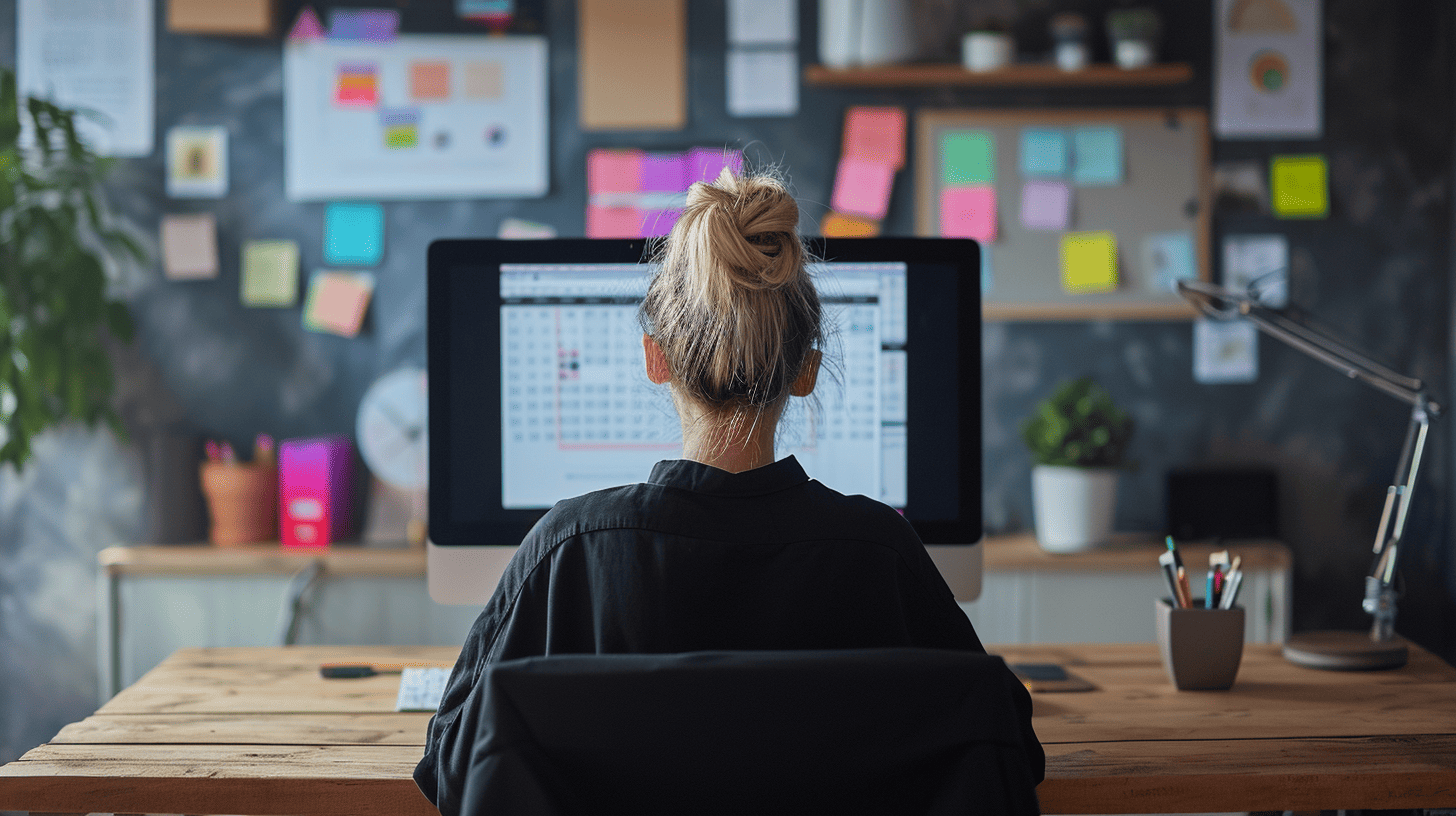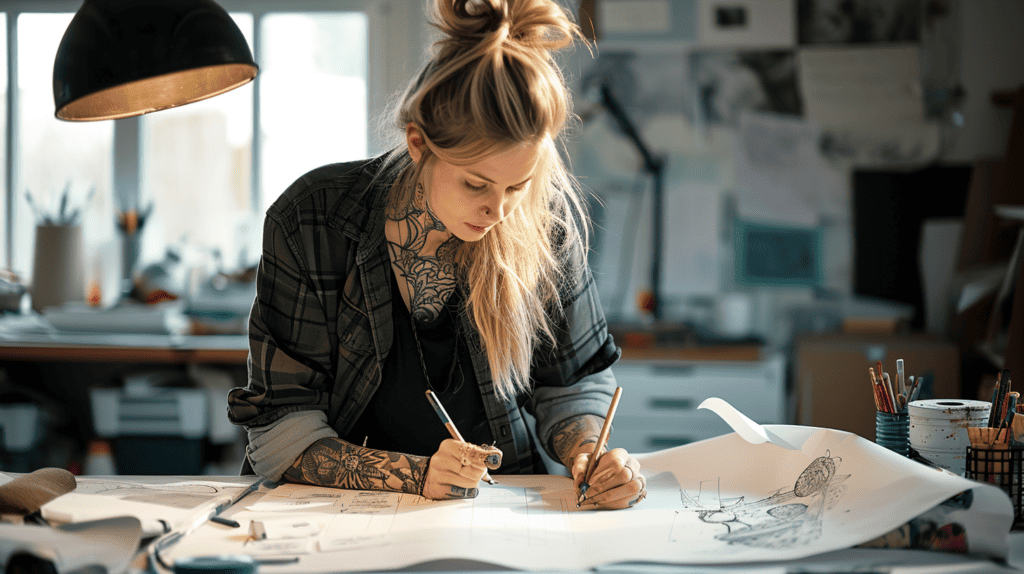
In this post I will reveal the things that I have found to boost creative productivity and help you scale your creative output. Bear in mind this are just frameworks that I have discovered for myself, but at the same time you can learn and apply to your own process. I try to incorporate and blend computer science and logical breakdown of creativity, redefining cliches and old archetipes of what does it mean to be a creative, ready?
Legacy Thinking
All productivity books start the same, there is a claim of a past chaotic self, then there is an event, a rebirth of sorts and finally a study or two that are cited to support whatever worked for someone and give them a bit of a scientific backing. The following is merely anecdotal brain dump.
All the online gurus will tell you to wake up, do your 5 minute journaling for gratitude, cold plunge and calendar blocking, but in the creative industry, all that is nice and good if you like to do it, but it will not really translate to anything but perhaps, give you a bit of structure or prep your day.
I have to admit, I have a sweet spot for these things. Love testing new productivity software and ways to keep track with all my information, tasks, to-dos, etc. But I always fail. I think I'm on to something interesting with the Bullet Journal method, but I just started very very recently. Let's see if I manage to survive the 2 week test.
Creative productivity has been the main driver of traffic to my website. So I will do a typical word vomit here with some random thoughts, and my future self can pick this up when he is creatively producing the book that will never be a success.
Productivity Basics

Productivity is simple in the end and can be universal. That means, we just need to be industrious about our approach to output.
More output = more productivity.
But that is only one part. Volume does not equate quality. The truth that I have found is quite simple. And if you are worried about originality, I would add also that it is within this process that originality appears. When you start to apply your intelligence to how you see your work and manage to get in and out of it. Let's break it down.
- Quick Start Sprint - Reduce the time that you need to think about something, put some pressure, and do quick MVP releases of your output.
- Test it with reality - Post it online or seek feedback.
- Detach - Look at it from an outsider perspective, be highly critical
- Iterate - And be scientific about it.
- Challeng It - Take notes, male a plan.
- Deconstruct - your next steps and prepare your next iteration.
- Repeat
There is no improvement without intelligence.
It doesn't matter the volume. That will help you generate muscle memory.
There is no formula we are all different, and have our quirks. Some people can only do with 4 hours of sleep, others like myself, can sustain 6.5, but 8 is best for pure mental sharpness.
Intelligence also plays a pivotal role in pattern recognition. As creatives, we often find ourselves in a tangle of ideas and concepts. The ability to discern useful patterns, connect disparate ideas, and foresee potential outcomes is a product of honed intelligence. This skill is particularly crucial in times of overwhelming creative choices or when faced with the daunting blank canvas of a new project.
A key aspect of maximizing creative productivity lies in the intelligent reflection on past work and the intentional planning of future steps. This process is not just about producing more but producing better with each iteration. It involves a keen sense of self-awareness and the ability to objectively analyze one's own creations.
The first step is to develop a habit of regularly looking back at your work. This isn't just a cursory glance but a deep, analytical dive. You need to detach yourself from the emotional attachment to your creation and view it with an objective lens. Ask yourself critical questions: What worked? What didn’t? Why did certain elements resonate more than others?
Detecting and Correcting Errors Once you've reflected on your work, the next step is to detect specific errors and areas for improvement. This is where your intelligence plays a crucial role. You need to understand not just the superficial aspects of what needs to be improved, but also the underlying principles and reasons. For example, if a design didn't resonate with the audience, go beyond the surface level 'it didn’t look good' to understanding the principles of design that weren't effectively applied.
Intentional Planning for Iteration Armed with insights from your analysis, you then move to intentional planning for your next iteration. This means setting clear, achievable goals for improvement. There will be a point where you will incorporate this directly into your brain, but in the beginning it pays off to be extremely conscious about what your intentions.
Iterative Improvement As you produce more, each iteration becomes an opportunity to apply what you've learned. This doesn't mean every new piece will be perfect, but it should be better than the last. This process of iterative improvement is akin to sculpting, where each stroke is more precise, informed by the strokes that came before. It's a cycle of creating, reflecting, learning, and improving.
Intention is your superpower.
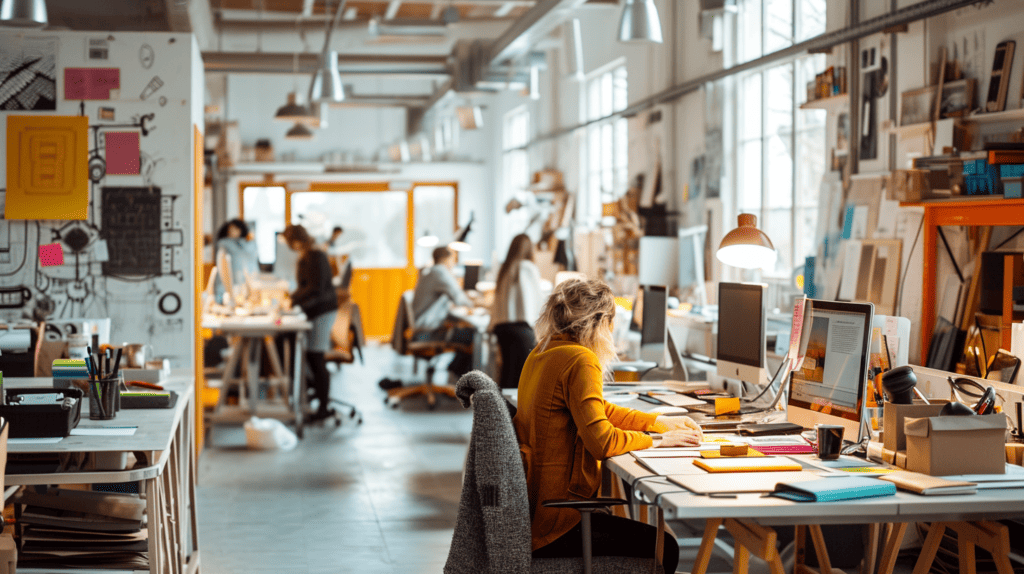
I don't want to sound like your next-door productivity guru. I apologize for being prescriptive or cliche. But whenever I fail as a creative, its because I am completely ignorant about what I'm doing.
Nowadays its really easy to start something, draw some cubes if you are into UI, sketch something fast if you are into concept, throw some things around to get a feeling. This also relates to my consistency of vision post of maintaining intention and discipline towards creative success.
Part of this warming up process is fine. But my biggest lesson from 2023-2024 is the following: Quality (Clarity) of Briefing = Quality of Output.
The Clarity of Briefing My biggest takeaway from these years is the direct correlation between the quality of the briefing and the quality of the output. This might sound straightforward, but its implications are profound. As a director, the clearer and more intentional I am in setting the brief for my team, the closer we get to achieving the desired results, faster. And people get surprised and self esteem rises when they see how much they can create with such level of quality. I wrote about this before also how to improve productivity when working with creative teams.
Direction and Intentionality Artists and creatives, no matter how talented, require direction. This isn't about micromanaging every aspect of their work but providing a clear, concise, and well-thought-out brief that they can build upon. The more intentional you are with your brief, the less room there is for ambiguity, leading to more focused and effective creative efforts.
Harnessing Intention as a Leadership Tool As a leader in a creative team, harnessing intention is about striking the right balance between providing guidance and allowing creative freedom. It's about being clear on the 'what' and the 'why' while being open to the 'how.' This approach not only leads to better outcomes but also empowers your team, giving them a solid foundation to unleash their creativity.
Intention and Creative Problem-Solving Intentionality also plays a crucial role in creative problem-solving. When you start with a clear intention, every decision and every creative choice is made with a purpose. This doesn't mean there's no room for spontaneity or organic development, but it ensures that these creative explorations are always aligned with the core objectives of the project.
The Feedback Loop of Intention and Output The relationship between intention and output is cyclical. Clear intentions lead to focused outputs, and the results of these outputs, in turn, inform and refine your intentions for future projects. This feedback loop is a dynamic process that fosters continuous improvement and adaptability in the creative workflow.
The Power of Intention in Personal Creativity On a personal level, being intentional about your creative work means understanding your motivations, goals, and the impact you wish to make through your art. This self-awareness not only guides your creative process but also helps in articulating your vision to others, be it team members, clients, or your audience.
Artificial Intelligence is like cheating - embrace it.
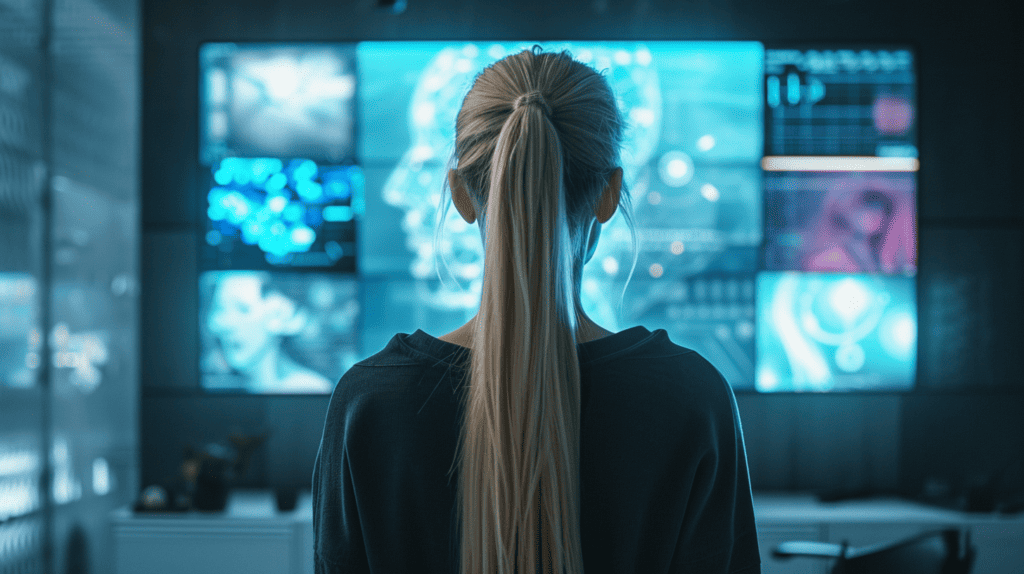
It's not going anywhere. So stop with the techno-doomerism and go for it. I recently saw, within my industry some tests generated with AI that would make my job obsolete, in the next 6 to 12 months. It felt like a splash of cold water to my face. But on the other hand, I truly believe on the unlocking power of this technology and also:
"Creativity and knowledge and explanation are all fundamentally impossible to define, because once you have defined them, then you can set up a formal system in which they are then confined"
David Deutsch - https://twitter.com/DavidDeutschOxf
This is not the hope, but the wall, that should give us confidence in the beauty of the human mind. And how there are still things that we can control, our brilliance, in the pursuit of creative expression.
I recently did a gigantic pitch in two days, only using Midjourney and chat GTP, this allowed me to scale my creative vision and saved me a lot of time. The more intentional you are with what you want, the clearer the AI will provide you with the images and text that you need. But here is what I did, I used those images to brief one of the artists in my team, and the output, because it was so clear, because I could just focus on the outcome that I needed, saved us so much time of exploring.
Integrating AI with Human Creativity The true magic happens when AI-generated concepts meet human creativity. In my project, I used AI-created images as a briefing tool for the artists on the team. The clarity and specificity of these AI outputs provided a solid foundation. This integration not only saved us time that would otherwise be spent on exploratory phases but also ensured that the creative direction was focused and well-defined from the start.
Focusing on the Outcome By leveraging AI, I could concentrate more on the desired outcome rather than getting bogged down in the initial stages of concept development. This approach streamlines the creative process, allowing for more time and energy to be spent on refining and perfecting the final output.
AI as a Collaborative Partner It's important to view AI not as a replacement for human creativity but as a collaborative partner that enhances it. AI can handle the heavy lifting of generating initial ideas and concepts, freeing up creative minds to focus on higher-level aspects like conceptual refinement, emotional resonance, and aesthetic sensibilities.
Embracing AI for Competitive Advantage In a rapidly evolving creative industry, those who embrace AI will find themselves at a significant advantage. AI tools can provide a wealth of inspiration, generate diverse ideas, and offer solutions that might not be immediately obvious to the human mind. This technology is a catalyst for innovation, pushing the boundaries of what's possible in creative expression.
Focus
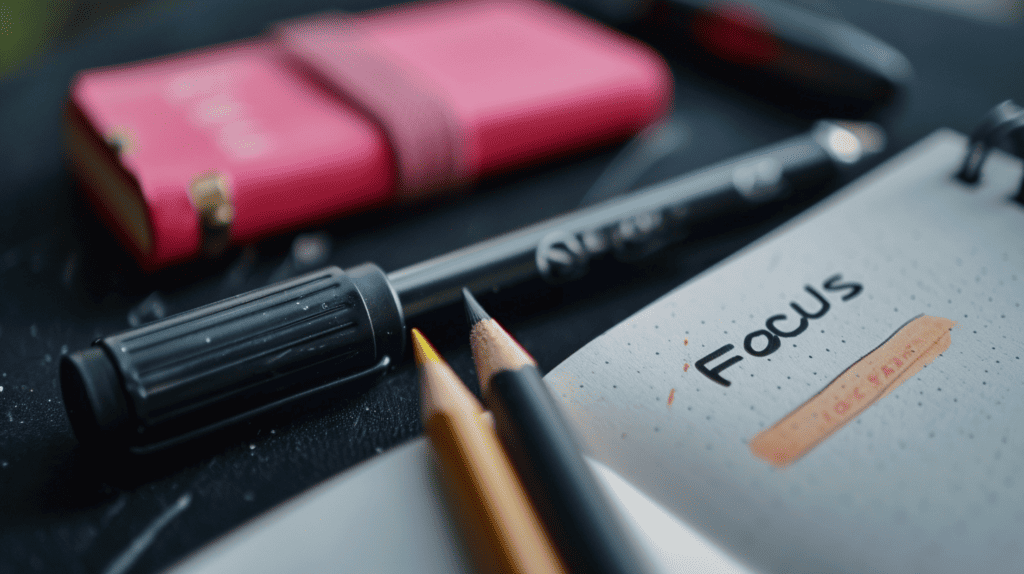
Finally, the magic word: Focus.
There is no way around this. I constantly have it written down in my notebooks because I need a constant reminder. Yes, a creative needs to juggle multiple things at once, but but but, the lack of focus will destroy you. You can scale focus with proper planning and blocking times for work. The industry is getting faster and faster paced, particularly with AI accelerating that change.
With more distractions, the ability to come back to the focus of the main thing, is so critical. It's easy to get your head around the next new technological shiny object. But trust me, going back with a simple plan. The plan not to get distracted from the task at hand, will put your creative output to the top 1% of creative professionals out there, and don't forget to aim to be world-class.
